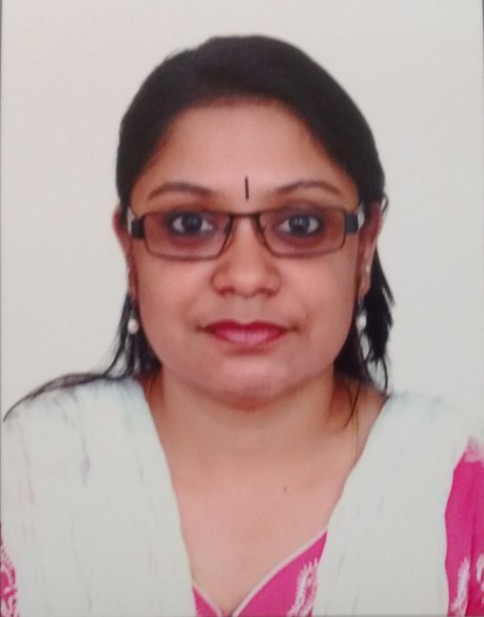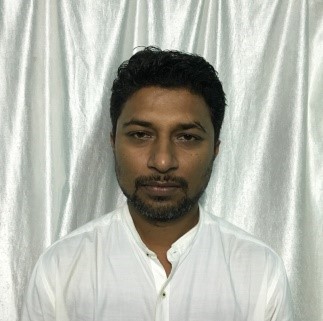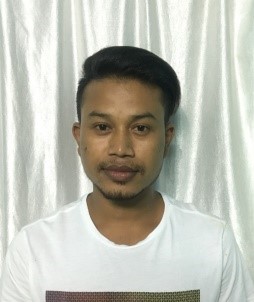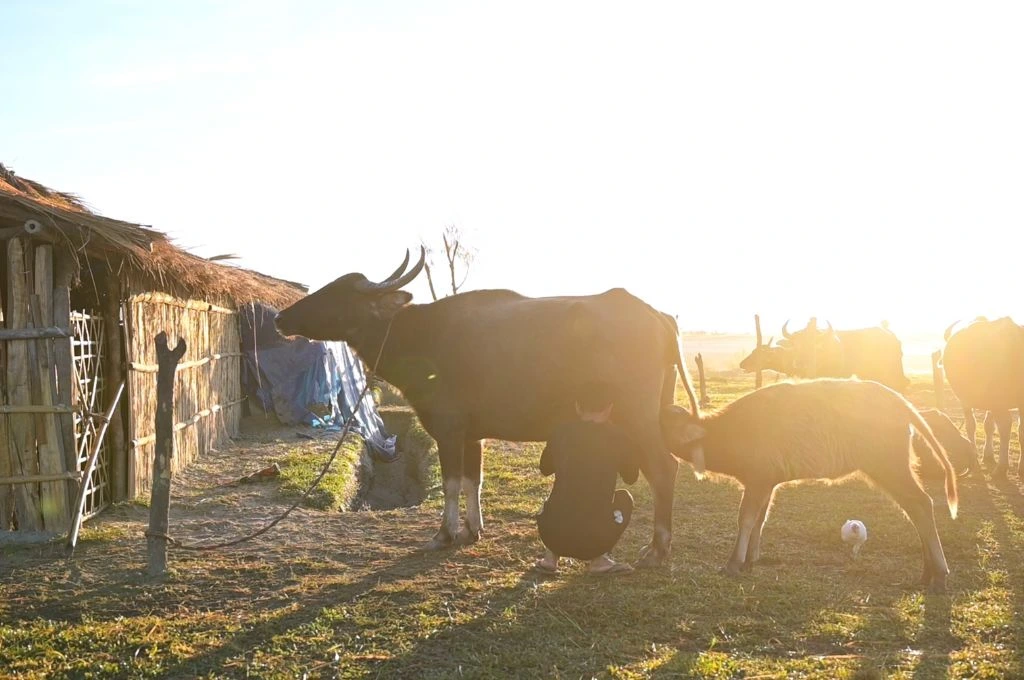Churinsoro is a village under the Ayodhya panchayat of Baghmundi block, Purulia district, West Bengal. One of the most remote and under-developed areas of West Bengal, and far from the reach of government programmes and facilities, this used to be a hotbed of the Naxalite movement.
The people living here are homogeneous tribal groups—Santhals, Ho, Bedia, among others—and they maintain exclusive identities. Socialisation is generally endogamous, as these people identify more with those belonging to their tribe. For them, earning a livelihood involves back-breaking physical labour with low returns. Women suffer the most, their identity being that of a labourer, regardless of whether they work in their own fields or on others’.
Poor farmers own little, if any, of the lowlands, where rice has traditionally been grown. There is very little rain-fed rabi crop, and yields are generally low. Mechanisation is also low; seeds of crops other than rice are generally hand-broadcast; weeds are removed by hand; and fertilisers (if used) are also hand-broadcast.
[quote]Women’s identities are that of a labourer, regardless of whether they work in their own fields or on others’.[/quote]The use of inputs is inhibited by the fact that these farmers are extremely risk averse. As a result, most villagers are food insecure with only 50–60 percent1 of their food grain requirement being met through on-farm production. This then leads to the migration of family members, particularly young men, which then creates labour shortages and social upheaval within these communities. Together, these drivers contribute to widespread malnutrition, low levels of literacy, especially among girls, and limited access to medical services due to low disposable household income.
A research project to improve farmer livelihoods
Considering the complicated context, we realised the need to develop a scalable, context-appropriate model, which would ensure sustainable changes for the community, their water security, and their resilience to climate change. We designed a research project* aimed at improving farmer livelihoods—especially of women—by helping them develop flexible and responsive cropping systems that made better use of available water resources.
The project was designed for both research and development outcomes. The research component was funded by ACIAR; the research process was facilitated by PRADAN and supported by Australian research teams, AVRDC, ACWADAM and BCKV, in order to make it trans-disciplinary. It ran for four years, from 2012 until 2016.
We used a unique, farmer-focused research methodology and social learning theories. In particular, we worked with women farmers who had been collectivised into SHGs. They were involved in everything from identifying and developing research questions and implementing experimental treatment in farmers’ fields, to helping interpret results, and communicating them to other farmers.
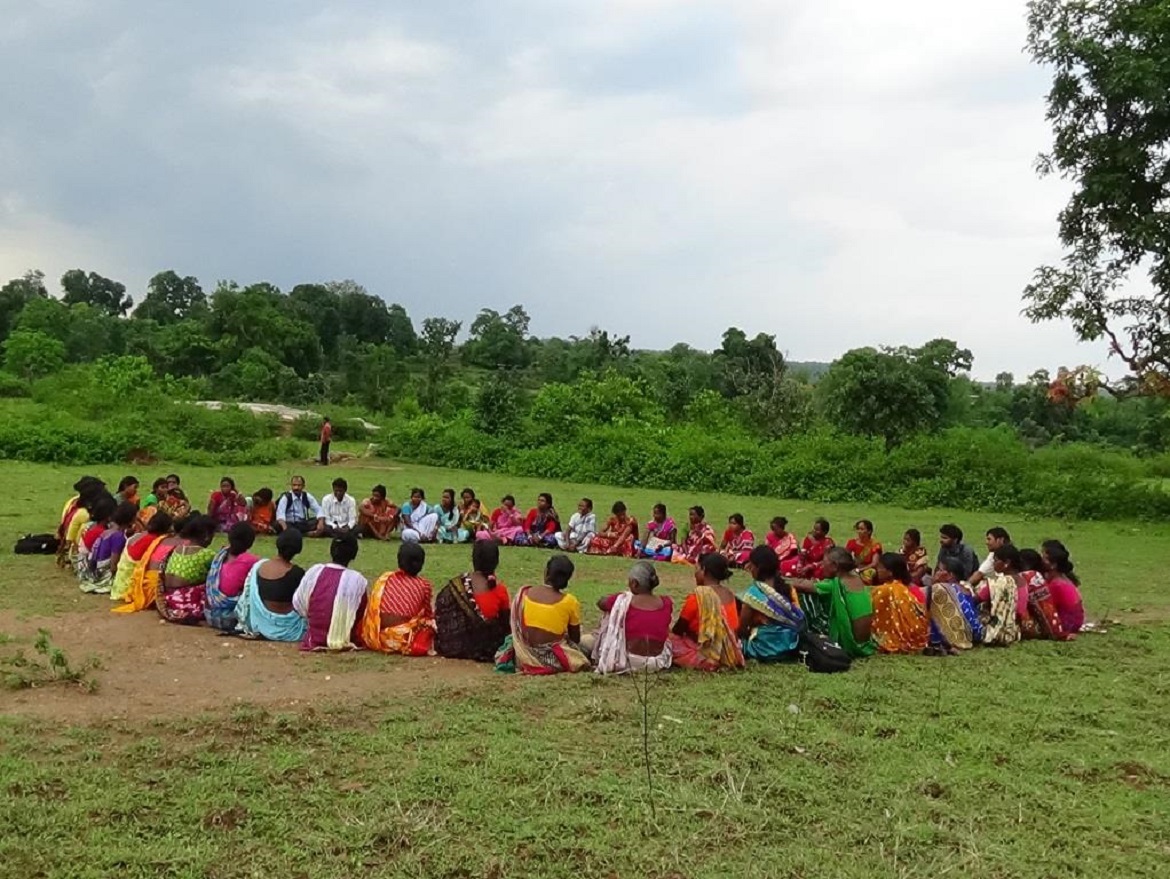
An SHG meeting | Photo courtesy: PRADAN
Project inception and initiation process
First, at an inception workshop with the project team partners—ACWADAM, AVRDC, BCKV, ACIAR and PRADAN, the framework for the project was developed, and the core principles outlined:
- The SHG would be our focus and the women would lead.
- No alien crop would be introduced initially; rather, the focus would be to understand the existing crops.
- The research questions would be linked with the community’s aspiration.
Related article: Promoting women in grassroots governance: Strategies that work
This workshop was followed by a series of workshops and meetings, in which both men and women participated. From the beginning, research questions and experiments were articulated and designed jointly with the community.
The project operations: systems and processes
Weekly SHG meetings became the forum for updating and discussing progress regularly. In these meetings, the schedules of the experiment were set up; the details of each experiment, with instructions, were deliberated upon, explained, and discussed.
The implementing partners also participated in these meetings, using them to explain the research component. The idea was to build the capacity of women, and impart technical and other knowledge in simple language using this platform.
[quote]The idea was to impart technical knowledge in simple language using this platform.[/quote]SHG members were trained to operate various agricultural tools and implements, and on new agronomic practices in the field. Challenges were discussed and addressed routinely. And, because this became a part of their weekly meeting, monitoring and evaluation was seamless. The women would also explain to the men what the experiment and the research was about, and would jointly execute it with them.
The low literacy rate among women made it harder to keep records, but the information was understood by most. Data interpretation and analyses was carried out with these women, which built their level of confidence and understanding on the movement of water, and its relation with crops.
Seasonal meetings were held at the end of one cycle of research, which coincided with end of the agriculture season. At these meetings, space was created by the facilitator to hear specific community observations. Probable solutions and actions to be taken were also discussed jointly.
Data was shared through graphs and other simple tools; and analyses of the data, both scientific as well as community wisdom, was done. The experience was consolidated and new action plans for the next year were set up.
At a focus group discussion (FGD) on agriculture practices in the community, women began speaking about positive changes in their lives as a result of the experiments. It was here that they came up with the idea of helping others bring about changes in their lives. Thus, the idea of a learning forum emerged. At the same time, farmers from neighbouring villages had noticed the changes in crops, and many had become interested in the experiments.
The SHG institutions began spreading the word about their planned schedule to invite villagers to see their life changing achievements. The women, along with the support of PRADAN staff, designed the visits and the steps of the field transact. They spoke about positive changes in their lives that went beyond agriculture.
The women farmer researchers were confident about their knowledge and learning, which was reflected in their answers to questions that were posed by the visiting farmers. Some offered to support the visitors, and guide them in the field if they wanted to adopt these new practices.
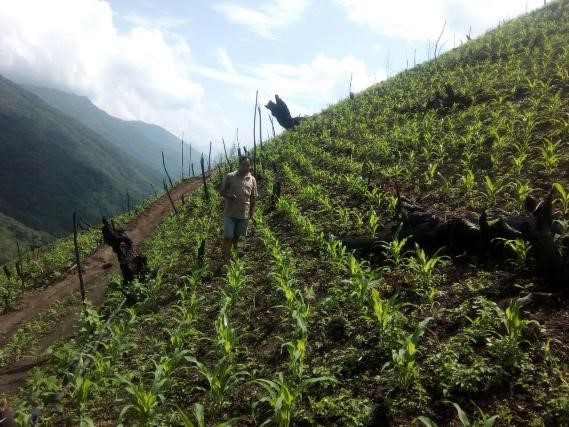
Maize and legume inter-cropping | Photo courtesy: PRADAN
The outcomes and results
During a mid-term review of the project in 2015, we undertook a detailed study to understand the outcomes and the changes that this research project was bringing in the community.
In order to get both qualitative and quantitative data, individual interviews with the research farmers were conducted, using a questionnaire that aimed at capturing the changes in different aspects of their life. Qualitative data came through group interviews, workshops, and FGDs.
Paddy is the staple food here, hence farmers wanted to cultivate paddy in a better way for a higher yield.
New varieties of paddy: They decided to adopt SRI paddy in the lowlands and Aerobic Direct Seeded Rice (ADSR) in the mid-lowlands and mid-uplands. SRI multiplied production in their fields, enhancing the food security2 period; ADSR helped to bridge the hunger period, leading to fully food secure families. The graph3 (Figure 1) shows the shift in the number of families to food sufficiency.

Figure 1: A diversification in crops and diet: A comparison
New agricultural practices: The women adopted many new practices such as inter-cropping of maize with legumes for the first time, which added to the income of each family. New tomato varieties were grown along with other vegetables such as pumpkin, garden peas, cabbage, etc.
Introduction of new crops: Pulses such as pigeon pea and horse gram were newly-adopted crops that brought cash and food diversity for the family. Data reflected that, at that time, 70 percent of the families had 12 months of food security and 30 percent had between six and ten months.
Mechanisation and reduced drudgery: The introduction of innovative farming tools brought significant changes in the farmers’ agricultural work, making it less time-consuming and drudgerous. The agricultural interventions brought better returns, decreasing forest dependency tremendously. This in turn impacted the health and environment of the women positively.
Shift in mindset: Women now had more time for themselves, their children and their families. Because of the food sufficiency and the increased family income, women were now prioritising their children’s education. The study also reflected that 80 percent of the family now spent most of their income on their children’s education and food. Farmer Sadhmoni didi said, “Besides food, I spend most of my earnings to pay for my child’s education in a private school for which I pay INR 1150 per month.”
The mindset shift from being preoccupied with food to now focusing on educating their children well marked a transformational change in the women’s lives.
Related article: Recognising women as farmers
Because the new and innovative agriculture practices had led to food sufficiency and food security in these villages, women were now eating more and better.4 Five years ago, women and their families had one meal a day comprising only rice with salt, and sometimes, wild leafy vegetables at night.
After the project, they could afford three meals a day. Meat consumption increased as well and 65 percent of the families reported eating meat, eggs, and fish two to three times a week, and 35 percent had it two to three times a month.

Figure 2: Diet changes: Past and present
Busy working in the forests, women did not typically have time to think about hygiene. They would bathe once every one or two months, and wash their clothes with ashes and warm water. This changed with the research project, allowing people like farmer Hemlata Mandi time to oil her hair and bathe with soap every day, and wash her clothes with a washing soap.
More gender equal roles through agriculture
Churinsoro was governed by men in every aspect, from decision-making to income, expenditure, labour, accessing skills, education, and so on. However, the inception of groups and the agricultural research project initiated different gender dynamics among the villagers.
[quote]The SHGs created space for women to be involved in decision making.[/quote]The SHGs created space for women to be involved in decision making. It was through this learning platform that they started saving their income, planning the agriculture, deciding what crops to cultivate, and which technique to adopt. The improved agricultural production, resulting from the research planned and decided by women, brought about a new perception of women among men and society. About 75 percent of the women shared that now they are treated equal to men to a large extent.
A noticeable shift was observed in the distribution of roles for agriculture work, a new cropping system, and mechanisation. Activities such as sowing, weeding, harvesting, and collecting of harvested crops, which used to be the work of women, were now performed both by men and women equally. This role sharing enabled women to reduce their workload during pregnancy and while lactating.
In their homes, a mutual decision-making process gave women a stronger say about agriculture and the expenditure of the family.

Figure 3: Change in influence and control over income
The women articulated that their improved knowledge in agriculture gave them recognition as farmers. About 80 percent of them said confidently that they could teach other farmers what they had learnt.
The SHGs also established an entrepreneurship model whereby they would teach others for a remuneration of INR 300 per day per group.
Figure 3 captures the change in control over income and decision-making role of the 20 women SHG members, who were interviewed and who participated in FGDs.
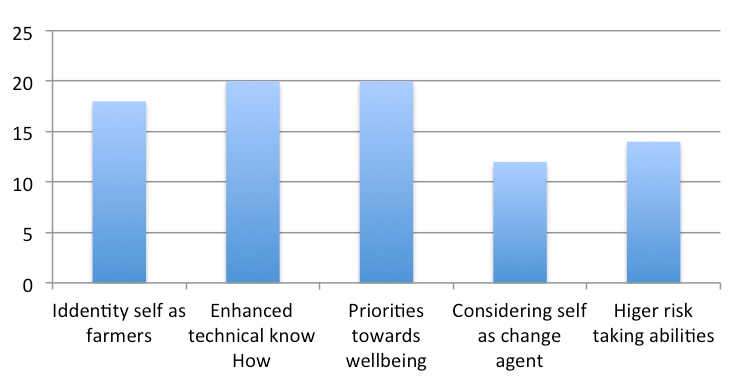
Figure 4: Perception towards self
What we learnt
This agriculture research programme was unique for two reasons. First, the research was conducted with real farmers on their own fields. Second, women were given primacy as farmer researchers.
[quote]The project ensured a shift in identity, from labourer, to farmer, to researcher, and finally, to teacher.[/quote]Our experience has shown that a local need-based planning is more effective than a project need-based planning. This is because it incorporates data that is based on reality, and therefore provides more space for women to plan and act based on their needs and problems, rather than sticking to the strict guidelines of a project. Moreover, it takes into consideration indigenous knowledge and practices, thereby developing women’s capacity to solve their own problems.
Women do more than 85 percent of farming work, and yet they are not acknowledged as farmers. None of the women we worked with initially considered themselves to be farmers by occupation or identity. The engagement approach and the processes5 adopted in this project ensured a shift in their sense of identity—from being a farm labourer, to a farmer, to a researcher, and finally to a teacher.
These researcher farmers are now role models, and others want to learn from them.
—
* This research project was built on the findings of the Australian Centre for International Agricultural Research (ACIAR) Project, ‘Water harvesting and better cropping systems for smallholders of the East India Plateau’, led by Professor Peter Cornish, University of Western Sydney (2006–11).
- Data came from a baseline using FGDs and surveys with PRA tools.
- Food security here implies availability of cereals/grains for consumption.
- Data was collected from sample farmers through a questionnaire and consolidated.
- The data and analysis has been drawn from the report of Sturat Vermaak and Damien Balzer, two undergraduate students of University of Western Sydney, who did their research work in the project area.
- We followed the learning cycle of ‘Kolbs Learning Theory’ in our engagement.
References
Spring. (March 2014). Linking agriculture and nutrition: pathways, principles and technique. Improving agriculture through a technical brief series. Understanding and applying primary pathways and principles.
Pandey R et al. (2015). Small farmer innovation. 2.Facilitating farmer agency through experimentation and learning about cropping systems. 17th Australian Agronomy Conference.
Kumar A et al. (2015). Smallholder farmer innovation. 1. Replacing transplanted rice monoculture with direct seeded rice based cropping systems. 17th Australian Agronomy Conference.
United Nations Children’s Fund (UNICEF). 1990. Strategy for Improved Nutrition of Children and Women in Developing Countries. New York: UNICEF.
The State of Food and Agriculture 2010–2011: Women in Agriculture: Closing the Gender Gap for Development. Rome: FAO.


